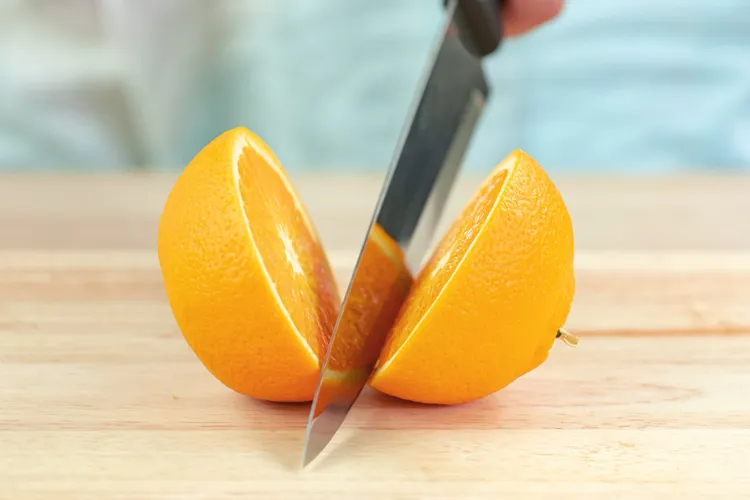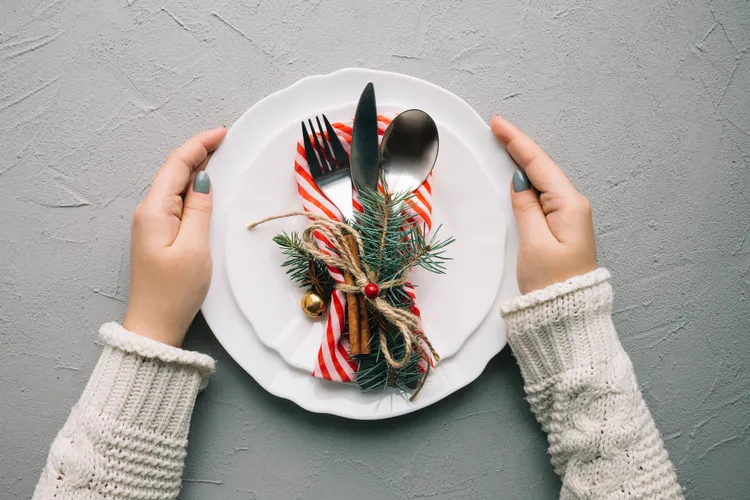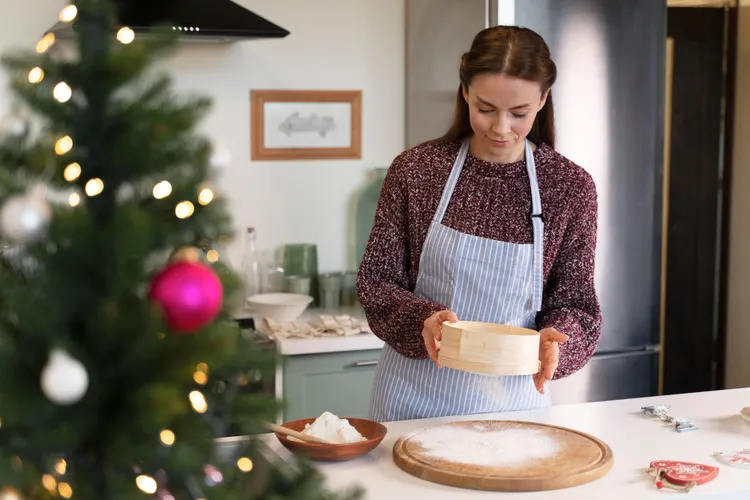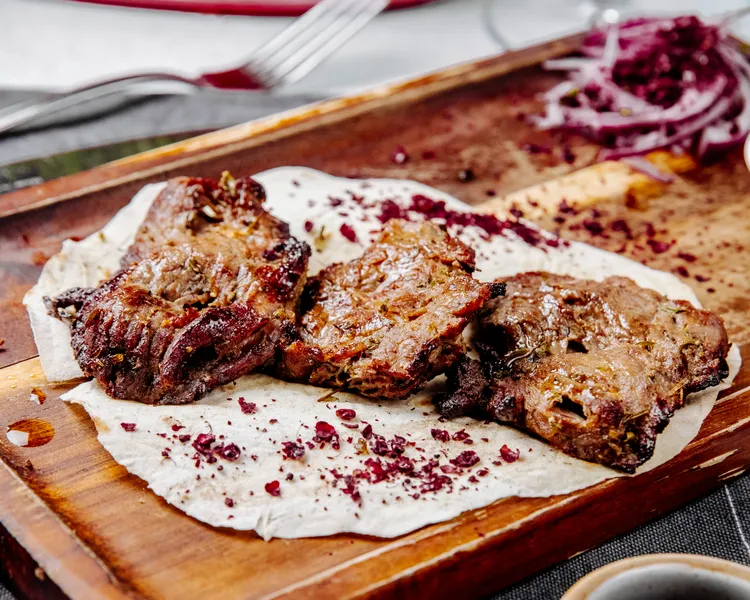Knife Skills 101: How to Chop Like a Chef
If you’ve ever watched a professional chef slice through vegetables with lightning speed and wondered, “How do they DO that?” - you’re in the right place. Knife skills are the foundation of great cooking. Not only do proper techniques make your prep faster and more efficient, but they also make cooking safer, easier, and way more enjoyable.

Whether you're a total beginner or someone who wants to be more confident behind the cutting board, this guide will teach you the basics you need to chop, slice, mince, and dice like a chef.
Let’s sharpen those skills - literally and figuratively.
Why Knife Skills Matter (More Than You Think)
Mastering knife skills isn’t about showing off. It’s about:
✔ Faster cooking
Chopping efficiently cuts your prep time in half.
✔ Better-looking food
Uniform cuts help food cook evenly - this means better texture and better flavor.
✔ Safety
The biggest kitchen injuries often come from incorrect knife grips or dull blades.
✔ Confidence
Once you know the basics, cooking becomes a LOT more fun.
The Only Knives You Really Need
Forget drawers full of specialty knives. A chef keeps it simple. You only need three:
1. Chef’s Knife (The Workhorse)
For chopping, slicing, and dicing almost everything.
2. Paring Knife
For peeling, trimming, and small detailed cuts.
3. Serrated Knife
For bread, tomatoes, and anything with a tougher skin.
Once you feel comfortable, you can add specialty knives - but these three will carry you through 90% of kitchen tasks.
How to Hold a Knife Properly (The Chef’s Grip)
Most home cooks hold their knife by the handle alone - and this causes wobbly cuts and poor control.
Chefs use a pinch grip:
Pinch the blade (not the handle) with your thumb and index finger.
Wrap the other three fingers around the handle.
Your wrist should stay straight, not bent.
This grip increases stability and reduces fatigue, allowing you to work more quickly and safely.
Your Guiding Hand: The Claw Grip
Your other hand (the one touching the ingredient) matters just as much.
Use the claw technique:
Curl your fingertips inward
Create a “wall” with your knuckles
Rest the side of the knife blade gently against that wall
Your knuckles guide the knife while keeping your fingertips safely out of the way.
This is the № 1 safety technique in professional kitchens.
Knife Motion: Don’t Chop - Rock
Beginners often chop straight up and down (like a guillotine), which feels clunky and unsafe.
Chefs use a rocking motion:
Tip of the knife stays lightly on the cutting board
The heel of the blade rises and falls
The blade rocks forward smoothly in a curve
This motion makes cutting effortless and fluid.
Essential Knife Cuts Every Home Cook Should Know
Let’s break down the main cuts you’ll use again and again.
1. Slice
Long, thin cuts - perfect for onions, peppers, cucumbers, etc.
Chef tip: Use long strokes, not short “sawing” motions.
2. Dice
Small cube-shaped pieces.
There are typically three sizes:
Small Dice → ¼ inch
Medium Dice → ½ inch
Large Dice → ¾ inch
Consistent cubes = even cooking.
3. Mince
Very fine chopping - great for garlic, herbs, onions, or ginger.
Chef tip: Use your non-dominant hand to steady the knife at the tip for quick, repetitive motions.
4. Julienne
Thin matchstick strips. Ideal for:
Carrots
Zucchini
Bell peppers
Apples
This cut is often used in stir-fries, salads, and garnishes.
5. Chiffonade
A fancy word for thin ribbons - usually of leafy herbs or greens.
How to chiffonade:
Stack the leaves
Roll tightly
Slice thinly across
Great for basil, mint, spinach, and kale.
Step-by-Step: How to Cut Common Ingredients Like a Chef
Let’s walk through a few essentials you probably chop every week.
How to Dice an Onion (Without Crying… Much)
Cut onion in half through the root
Peel
Make horizontal cuts (parallel to the board)
Make vertical cuts (toward the root)
Slice downward - perfect dice falls away
The root holds it together. Brilliant trick!
How to Mince Garlic
Smash the clove with your knife
Peel
Chop roughly
Use the knife side to press and smear garlic into a paste
Pasted garlic mixes more evenly into dishes.
How to Slice Bell Peppers
Cut off top and bottom
Slice down one side
Unroll the pepper into a flat sheet
Remove seeds
Slice into strips or dice
This avoids dealing with messy seeds mid-cut.
How to Cut Carrots into Even Pieces
For soups and stews:
Cut lengthwise
Flatten the carrot (creates stability)
Slice into rounds, half-moons, or sticks
Even cuts = perfectly cooked carrots every time.
How to Keep Your Knives Sharp (The REAL Secret)
A sharp knife is safer than a dull one - really. Dull knives slip, drag, and force you to press harder.
Maintain your knives by:
Honing regularly (before each use)
Sharpening every 3-6 months
Using a wooden or plastic board (never glass)
Hand washing (never dishwasher!)
Your knife will last decades with proper care.
Choosing the Right Cutting Board
Forget tiny boards or cutting on your countertop. You need:
Large
Sturdy
Non-slip
Wood or plastic
Place a damp towel under your board to keep it from sliding. Chefs swear by this trick.
Common Knife Mistakes (and How to Fix Them)
Wrong grip → ✔ Pinch the blade
Chopping straight down → ✔ Rock the knife
Using a dull blade → ✔ Hone + sharpen
Board sliding → ✔ Add towel underneath
Tiny cutting board → ✔ Upgrade to larger surface
Watching the knife instead of your knuckles → ✔ Follow the “claw”
Fix these and your knife skills will improve instantly.
Practice Makes Perfect: What to Chop First
Want to get better fast? Practice on:
Carrots
Celery
Onions
Bell peppers
Zucchini
Potatoes
These give you great resistance and lots of repetition.
Knife Confidence Starts Here
Knife skills are the foundation of great cooking - and once you learn the basics, you’ll feel unstoppable in the kitchen.
With the right grip, proper motion, and a little practice, you can chop faster, safer, and more efficiently than ever before.
And the best part?
Every meal becomes easier and more fun.









